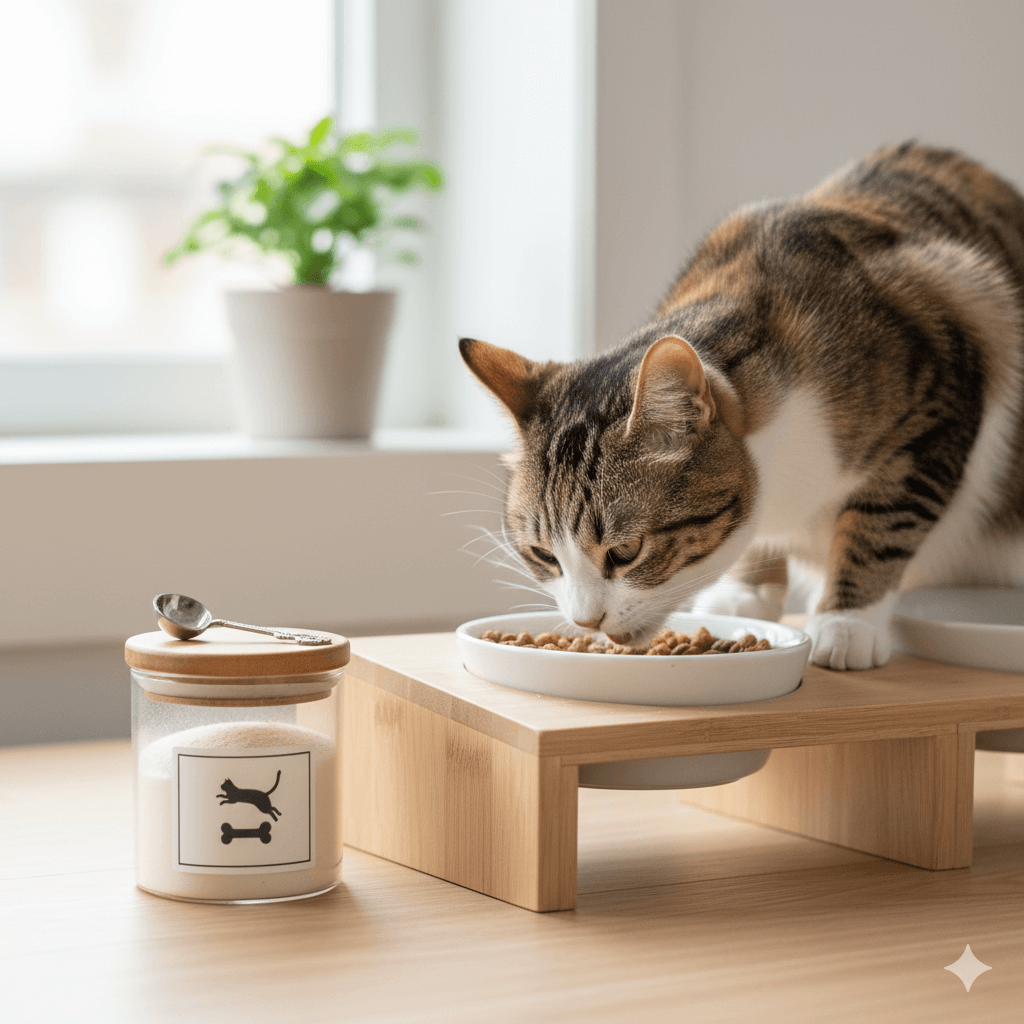Can Cats Eat Ladybugs?
Cats are naturally curious creatures, often exploring the world around them by sniffing, pawing, and even tasting things they encounter. One such curiosity might be ladybugs—those small, colorful beetles that frequently appear in gardens and homes. But can cats eat ladybugs, and is it safe for them to do so? While ladybugs may seem harmless, they can pose risks to your feline friend depending on the species and circumstances. In this blog post, we’ll delve into everything you need to know about cats and ladybugs, including potential dangers, safer alternatives, and expert tips to keep your cat healthy and happy.
Potential Risks of Cats Eating Ladybugs
While some ladybugs may seem harmless, certain species can cause problems if ingested by cats. Understanding these risks will help you protect your pet from harm.
Toxic Secretions:
Some ladybugs, like the Asian lady beetle, release a yellowish fluid called hemolymph when threatened. This substance can irritate a cat’s mouth or digestive system.Choking Hazard:
Small insects like ladybugs can get lodged in a cat’s throat, especially if swallowed whole without proper chewing.Allergic Reactions:
Cats with sensitive systems may experience mild allergic reactions, such as vomiting or diarrhea, after consuming ladybugs.Pesticide Exposure:
Ladybugs found outdoors may have been exposed to pesticides or chemicals, which can be toxic to cats if ingested.Behavioral Changes:
Ingesting ladybugs might lead to temporary changes in behavior, such as excessive drooling or pawing at the mouth due to irritation.
These risks highlight why it’s important to monitor your cat’s interactions with ladybugs and take precautions to prevent accidental ingestion.
Potential Risks of Cats Eating Ladybugs
While some ladybugs may seem harmless, certain species can cause problems if ingested by cats. Understanding these risks will help you protect your pet from harm.
Toxic Secretions:
Some ladybugs, like the Asian lady beetle, release a yellowish fluid called hemolymph when threatened. This substance can irritate a cat’s mouth or digestive system.Choking Hazard:
Small insects like ladybugs can get lodged in a cat’s throat, especially if swallowed whole without proper chewing.Allergic Reactions:
Cats with sensitive systems may experience mild allergic reactions, such as vomiting or diarrhea, after consuming ladybugs.Pesticide Exposure:
Ladybugs found outdoors may have been exposed to pesticides or chemicals, which can be toxic to cats if ingested.Behavioral Changes:
Ingesting ladybugs might lead to temporary changes in behavior, such as excessive drooling or pawing at the mouth due to irritation.
These risks highlight why it’s important to monitor your cat’s interactions with ladybugs and take precautions to prevent accidental ingestion.
Check this guide 👉Can Cats Eat Jalapeños? Best 7 Expert Tips!
Check this guide 👉Can Cats Eat Nectarines? Best 7 Expert Tips!
Check this guide 👉Can Cats Eat Pineapple Leaves? Best 7 Expert Tips!

Safe Practices Around Ladybugs | Risks of Cats Eating Ladybugs |
|---|---|
Keep windows screened to prevent entry | Toxic secretions causing irritation |
Use natural pest control methods | Choking hazards from swallowing |
Supervise outdoor playtime closely | Pesticide exposure leading to poisoning |
Remove ladybugs safely from your home | Allergic reactions triggering vomiting |
Provide alternative toys for stimulation | Behavioral changes due to discomfort |
What to Do If Your Cat Eats a Ladybug
If your cat accidentally consumes a ladybug, staying calm and observant is key. Follow these steps to ensure their well-being.
Monitor for Symptoms:
Watch for signs of distress, such as drooling, vomiting, diarrhea, or excessive grooming.Offer Fresh Water:
Encourage your cat to drink water to help flush out any irritants from their system.Avoid Inducing Vomiting:
Unless instructed by a veterinarian, avoid forcing your cat to vomit, as this could worsen the situation.Contact Your Vet:
If symptoms persist or worsen, seek professional advice promptly to rule out complications.Prevent Future Incidents:
Take steps to minimize future encounters between your cat and ladybugs, such as sealing cracks or using deterrents.
By acting quickly and responsibly, you can mitigate any adverse effects and keep your cat safe.
How to Deter Cats from Eating Ladybugs
Preventing your cat from eating ladybugs requires a combination of supervision, training, and environmental adjustments. These strategies can help redirect their focus.
Provide Interactive Toys:
Engage your cat with stimulating toys to divert their attention away from hunting insects.Use Positive Reinforcement:
Reward your cat for ignoring ladybugs instead of chasing or eating them.Create a Distraction-Free Zone:
Designate areas where ladybugs are less likely to appear, such as clean, sealed rooms.Teach Recall Commands:
Train your cat to come when called, allowing you to intervene before they snatch a ladybug.Regular Grooming Sessions:
Keep your cat entertained and relaxed through grooming, reducing their desire to hunt bugs.
With consistent effort, you can discourage your cat from pursuing ladybugs altogether.
Common Misconceptions About Ladybugs and Cats
There are several myths surrounding ladybugs and their interactions with cats. Clearing up these misconceptions ensures a better understanding of how to handle such situations.
Ladybugs Are Always Safe for Pets:
While most ladybugs aren’t deadly, some species contain substances that can irritate cats’ mouths or stomachs.Cats Know What’s Safe to Eat:
Cats rely on instinct, but curiosity often overrides caution, leading them to ingest potentially harmful items.Ladybugs Can’t Cause Serious Harm:
Though rare, repeated exposure to certain ladybug species can lead to cumulative health issues.Indoor Ladybugs Are Harmless:
Even indoor ladybugs can secrete irritating fluids, making them unpleasant for cats to consume.Training Won’t Help Prevent Accidents:
Consistent training and environmental management can significantly reduce the chances of incidents.
Dispelling these myths empowers you to make informed decisions about your cat’s safety.
Health Considerations for Cats After Eating Ladybugs
If your cat has consumed a ladybug, monitoring their health closely is essential. Here are some considerations to keep in mind.
Mild Digestive Upset:
Occasional vomiting or diarrhea may occur but should resolve within 24 hours; consult a vet if symptoms persist.Oral Irritation:
Excessive drooling or pawing at the mouth indicates irritation from the ladybug’s secretions.Dehydration Risk:
Ensure your cat stays hydrated, especially if they’ve experienced vomiting or diarrhea.Watch for Lethargy:
Unusual tiredness or lack of appetite could signal a more serious reaction requiring veterinary attention.Long-Term Effects Are Rare:
Most cases involve short-term discomfort, but ongoing issues should be evaluated by a professional.
Proactive observation ensures your cat recovers fully without complications.
Alternative Ways to Redirect Your Cat’s Attention
If your cat shows interest in ladybugs, redirecting their focus toward safer activities can prevent unwanted behaviors.
Interactive Feeders:
Puzzle feeders challenge your cat mentally and physically, keeping them occupied and entertained.Window Perches:
Place perches near windows where your cat can watch birds or squirrels instead of focusing on insects.Catnip Toys:
Toys infused with catnip stimulate playfulness and distract your cat from hunting bugs.Laser Pointers:
A laser pointer provides endless entertainment and satisfies your cat’s predatory instincts safely.Engage in Playtime:
Regular interactive play sessions strengthen your bond and tire out your cat, reducing their urge to chase insects.
Redirecting their energy ensures a happier, healthier cat while minimizing risks.
Frequently Asked Questions About Cats and Ladybugs
Are ladybugs poisonous to cats?
Most ladybugs aren’t highly toxic, but some species release irritating fluids that can upset your cat’s stomach.
What should I do if my cat eats a ladybug?
Monitor for symptoms and contact your vet if you notice anything unusual, such as vomiting or lethargy.
Can indoor ladybugs harm my cat?
While less risky, indoor ladybugs can still secrete irritating fluids if provoked or eaten.
How can I keep ladybugs out of my home?
Seal cracks, repair screens, and use natural deterrents like citrus scents to discourage ladybugs from entering.
Do all ladybugs taste bad to cats?
Not necessarily, but the bitter taste of their secretions often deters cats from eating more than one.
Protecting Your Cat from Ladybug Encounters
While ladybugs may seem like harmless garden visitors, they can pose risks to curious cats who decide to snack on them. By understanding the potential dangers, taking preventive measures, and knowing how to respond if an incident occurs, you can safeguard your feline friend’s health and happiness. Remember, a little vigilance goes a long way in ensuring that both your cat and those tiny beetles coexist peacefully. With love and care, you can keep your adventurous kitty safe from unexpected hazards.
Understanding Bone Supplement for Cats: Best 7 Expert Tips! – Safe, vet-approved guidance for strong feline bones & balanced nutrition.
Bone Supplement for Dogs: Best 7 Expert Tips! – Expert guide to calcium, collagen & bone health for every life stage.
Understanding Can Cats Get Sunburn: Best 7 Expert Tips! – Protect your feline from UV damage with vet-backed prevention strategies.
How to Train a Seizure Alert Dog: Best 7 Expert Tips! – Learn expert-backed steps to nurture natural instincts into reliable, life-saving seizure alerts.





